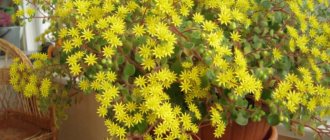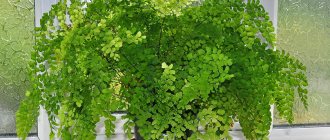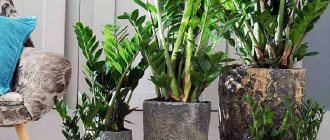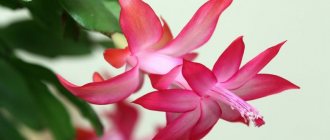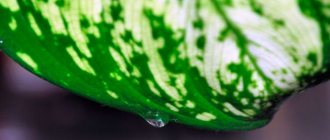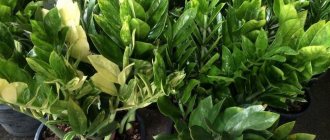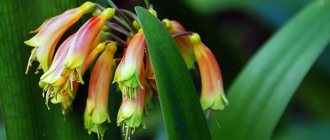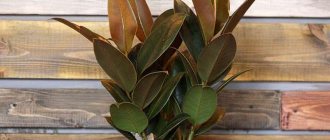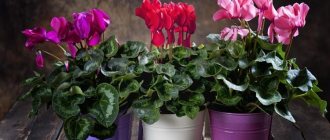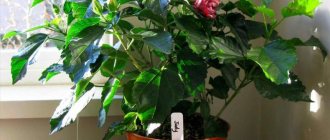This plant is often found on our windowsills, but still some people cannot tame it and turn it into a beautiful lush bush. To successfully grow aichrizone at home, you need to know its features, as well as the basic rules of indoor care and agricultural technology.
This flower has many other names: the tree of love and happiness, the tree of lovers, the love tree, the family tree, the flower of love - all these names show the importance gardeners place on the state of aichrizon and how important it is for people that it develops and not withers .
Domesticated species
Not all aichrizones were able to take root in indoor conditions. You can even determine whether your succulent belongs to a specific species by the description of the flower, because all plants of this species have significant external differences from each other. The most common ones are the following:
Aichrizon home
The most popular selection hybrid among gardeners. The height and diameter of the crown are approximately equal and usually do not exceed 30 centimeters. It has small leaves, similar to the heads of pins, and is almost always covered with sparse whitish hairs. The flowers of this species are bright yellow.
Aichrizon sedum-leaved
It is extremely branched, stretching upward rather than wider; the difference between the height and diameter of the crown is usually twice as high in favor of the first indicator. The foliage is slightly sticky, light green with a light green or even yellow tint. The flowers are golden yellow.
Aichrizon is loose, it is also prostrate
Height up to forty and diameter up to thirty centimeters. The foliage is diamond-shaped, almost completely falling off after flowering. There are a lot of flowers themselves: clusters of cream, some yellowish flowers can stretch up to twenty centimeters in length.
Aichrizon sinuous
Creeping subspecies. With a small height, barely reaching 15-20 centimeters, the crown area occupies about 30-40 centimeters. The surface of the succulent is covered with short fluffy hair.
Aichrizon point
A subspecies up to thirty centimeters high, the leaves are dark green in color and covered with light fibers. There is less fluff on the leaves, but they also have it. The edges of the leaves are covered with small teeth.
Despite the noticeable external differences, all varieties of aichrizon require the same conditions of maintenance and care indoors.
Description
The tree of happiness looks like a typical representative of succulents or the Crassulaceae family. In the wild, this plant exists in harsh conditions - it can be located in rock cracks, on very poor soils, can tolerate droughts and develop under severe nutrient deficiency. The birthplace of the flower is the Canary and Azores Islands, certain regions of Portugal, Morocco and Madeira.
There are 15 species in the genus, some of them are closer to herbaceous plants, while others grow into powerful medium-sized subshrubs. The shoots almost never become completely lignified, but older specimens resemble trees with a lush crown.
For the most part, these are perennials, although everything depends on the climate. It is characterized by rapid growth, so even in one season, aichrizon manages to grow significantly. The leaves are arranged oppositely, vaguely reminiscent of hearts in shape, for which people have awarded the flower with many romantic names. The foliage color of the tree of love can be all shades of green, and new varieties are distinguished by the presence of variegated colors interspersed with yellow, gray, white and even red. Most species have villi on the surface that give a fluffy effect.
The botanical name comes from the Greek language and translated means “eternal yellow”. This is due to the bright flowering that occurs annually in the second half of spring. After flowering, the leaf rosette on which the peduncle was located dies. In addition to yellow coloring, there are white, beige and pink varieties.
Aichrizon contains glycosides in plant juice. Ingestion may cause poisoning in small children and pets. Getting juice on the skin is also dangerous - burns and local reactions may occur.
When grown indoors, the crown is most often formed in the form of a small standard tree. This crop is actively used for the formation of indoor bonsai. If care is correct, flowering is long and abundant, sometimes more than six months.
Lighting
Aichryzons love plenty of light, but direct sunlight can burn the fleshy leaves of a succulent. Therefore, the optimal solution would be to organize diffused light with a duration of about fourteen hours.
For uniform development of the crown, it is necessary to periodically change the position of the plant, exposing it on different sides to the light source.
Reproduction
Rooting into the ground
Aichrizon reproduces by aerial roots, so the easiest way to get a new plant is to cut a cutting from an old one, choosing a branch on which characteristic growths have begun to form. To root a succulent this way, simply stick the cutting into the soil and make sure it doesn’t dry out. After new shoots appear on the branch, Aichrizon is planted in a new permanent container.
Cuttings
It is a little more difficult to root cuttings in water, because there is a high probability that they will rot due to excess moisture. Cuttings of Aichrizon are more effective than propagation by seeds, since the latter very quickly lose their germination capacity, and you can’t buy them in every store.
Seating
In some cases, you can also propagate a flower by carefully dividing the earthen ball when replanting.
Temperature and humidity
For most of the year, the plant feels comfortable at room temperature. In winter, in order to create a period of necessary rest for the plant, it is recommended to move it to an area with +10-12 degrees.
It is important not to let this indoor plant get cold; to do this, you need to make sure that the temperature does not drop below 8 degrees. At the same time, during wintering, watering is reduced to zero; only once every few days it is recommended to carry out surface spraying of the soil.
In general, aichrizon prefers dry air, so it does not need spraying or moisturizing. However, it is permissible to give the plant a warm shower once every couple of weeks; this will have a positive effect on the appearance of the succulent.
Where is the best place to put it?
The tree should be kept on a windowsill facing east or west. While there, aichrizon is able to neutralize the evil thoughts of envious people looking into the windows of the home.
In order for aichrizon to truly become a talisman of love, it is not enough to simply buy aichrizon and wait until its energy begins to act and changes in life come. A flower needs to be looked after, it needs to be loved . Then, along with the growth of the flower, harmony, feelings, and good luck will begin to come into life.
Soil selection and replanting
Aichrizon will ideally thrive in ready-made soil mixed specifically for succulents and cacti. Such soil will satisfy all the needs of the plant.
With proper care, aichrizon develops quickly, and it needs to be transplanted into a new container approximately every two years. The procedure should be carried out in early spring, before the plant emerges from winter dormancy.
It is necessary to add drainage to the pot, and only after that the main soil should be added, slightly moistening it. After removing the succulent from the old pot, sanitary pruning is carried out if necessary.
After transplantation, the plant should be left outdoors for a couple of days, but the first watering should be done no earlier than five days after transplantation. The first month after changing the pot, you should water the plant with caution so as not to create conditions for the development of root rot.
Bloom
This action begins when Aichrizon reaches the age of two or three years, usually in the spring, and can last up to six months or even longer. During this period, many leaves may fall off, and the peduncle that has outlived its usefulness eventually also dies. If Aichrizon, which has grown to such years, does not bloom, you can keep it in more strict conditions during the next period of winter dormancy, transplanting it into a smaller container for a relatively cold and light winter, observing a rare watering regime.
Watering
During the period of active growth, the aichrizon plant requires regular, but not extensive watering. Between adding moisture, the soil should dry out to the middle of the pot, but a more obvious sign is the leaves of the plant.
Experienced flower growers understand when and how to water a flower based on their condition. When a succulent lacks water, the leaves lose their elasticity and become wrinkled. Typically the plant requires watering every 4-5 days.
Feng Shui meaning
Feng Shui experts recommend placing a flower on any window of the house, except the north one.
According to Feng Shui, the location of the flower in the southwestern side of the room will enhance the influence of the flower on personal and family life, because this location is responsible for love and marriage.
In addition, the plant can help where conflict situations often arise , so it can be grown in offices or school classrooms.
Breeding
There are two methods to grow new specimens of succulents: through cuttings and through seed germination. When choosing a method, it is worth considering that plants obtained by cuttings develop much faster than their counterparts from seeds.
Propagation by seeds
As soil for planting seeds, you must use a mixture of leaf soil and sand, in a ratio of 2 to 1. Immerse the seeds to a depth of no more than half a centimeter and leave the container in a warm place, covering it with film or glass to create greenhouse conditions. It is necessary to regularly ventilate the pot and moisten the soil with a spray bottle.
Shoots will appear in about 14 days. The sprouts must be transplanted into a new container after they have formed 3-4 leaves, after which they can no longer be covered. When the succulents get stronger, you should plant them in separate pots and care for them as you would for adult plants.
Cuttings
Cuttings are done at the very beginning of spring. For it, shoots at least 9 centimeters long are selected, carefully cut and dried in the shade for several hours. There are two methods for rooting.
You can immediately plant the cuttings in the soil, or you can first soak the sprouts in water with activated carbon dissolved in it, waiting until the first roots appear. Once the seedlings take root, they can be planted in their own pots.
Varieties
Among the 15 species of this flower in garden stores, those that are most suitable for home cultivation are presented. The most common types of aichrizon:
- Domestic (Aichryson domesticum). A compact hybrid with a spherical dense crown has gained great popularity among gardeners. There is whitish pubescence on the foliage. It blooms profusely and at the same time exudes a pleasant aroma.
- Sedifolium (Aichryson sedifolium). A characteristic feature is shortened shoots. This makes it suitable for growing on alpine hills and rockeries, as well as for desert compositions. The crown looks exotic: the leaves resemble long grapes pressed tightly against each other, which are covered with a sticky coating. There are scarlet streaks at their upper ends.
- Prostrate or Laxum (Aichryson laxum). A very unusual shape with a tree-like crown consisting of erect branches. Flowering shoots protrude high above the foliage. One of the advantages is a long flowering period. This takes so much energy from the plant that towards the end the leaves fall, but over several months the foliage is gradually restored.
- Point (Aichryson punctatum). The stems have a reddish tint, and bright green leaf plates grow on them. Very small buds remain open for a long time.
- Tortuosum (Aichryson tortuosum). A plant with a small spherical crown. The leaves sit on short petioles and have very dense hairs. The flowers are not yellow, like most species, but beige, but they do not fade for up to six months.
- Gucci (Aichryson goochiae). The most suitable variety for the formation of bonsai. Branching is activated by constantly pinching the ends so that the crown becomes denser. The leaves are rounded with a small depression in the middle of the plate.
- Variegata (Aichryson Variegata). A highly decorative variety with variegated coloring, which is achieved through white or light yellow areas. On young branches the variegation is more pronounced, but on old shoots it is barely noticeable. To achieve maximum decorative effect, it is important to keep them in places with good lighting.
All varieties and species are compact and hardy. The principles of indoor care and cultivation are almost the same.
Common Problems
Falling leaves
In most cases, the loss of leaves by aichrizonas should not be perceived as a negative symptom. After flowering, the succulent sheds its leaves, and this is a normal stage of its development. You should only be concerned when the leaves fall during the winter dormant period: in such a situation, it is necessary to reconsider the conditions of maintenance.
Root or stem rotting
If putrefactive processes develop, the plant cannot be saved. All that remains is to separate the branches suitable for cuttings and start nurturing them.
Blisters on leaves
Blisters swollen on the leaves are the so-called “white swelling”. The phenomenon occurs due to errors in care, in which excess moisture does not have time to evaporate through the leaves and literally tears their structure from the inside.
To prevent the development of this pathology, it is necessary:
- Thin out the fruit planting;
- Do not water the plant in cold and damp weather;
- Improve drainage in the pot;
Choose a fertilizer with a high calcium content.
Pests
Most often, succulents are affected by spider mites and scale insects. It is worth adhering to the standard treatment regimen: quarantine from other plants and repeated treatment with insecticides.
Like many other plants that are exotic to our latitudes, aichryzons only seem difficult to care for. In fact, if you follow the rules of watering and properly organize the dormant period, even a novice plant lover can cope with growing them at home.
Formation of a bush
To enhance branching and create a crown that is pleasing to the eye, Aichrizon is pruned. Like bonsai, with pruning and patience, almost any shape can be created: a lush bush, a small tree or just a green ball. Additionally, pruning is used for medicinal purposes to return the flower to its natural beauty, for example, after a too warm winter, when the shoots can become very elongated, or after the loss of a large number of leaves. With this treatment, the shoots are shortened, and very thin and non-viable branches are cut out.
Photo of the plant Aichrizon (Tree of Love)
Diseases
Most diseases of Aichrizon are associated with improper care of it - infrequent or excessive watering, too hot or cold temperature. Fallen leaves of a plant can be a sign of sunburn, dry soil, or, conversely, roots that have begun to rot. If they fall in the fall, then the plant most likely has begun to prepare for a dormant period and you need to find a place for it to spend a cool and light winter. Pests of indoor plants are not dangerous to Aichrizon; in most cases they bypass it.
